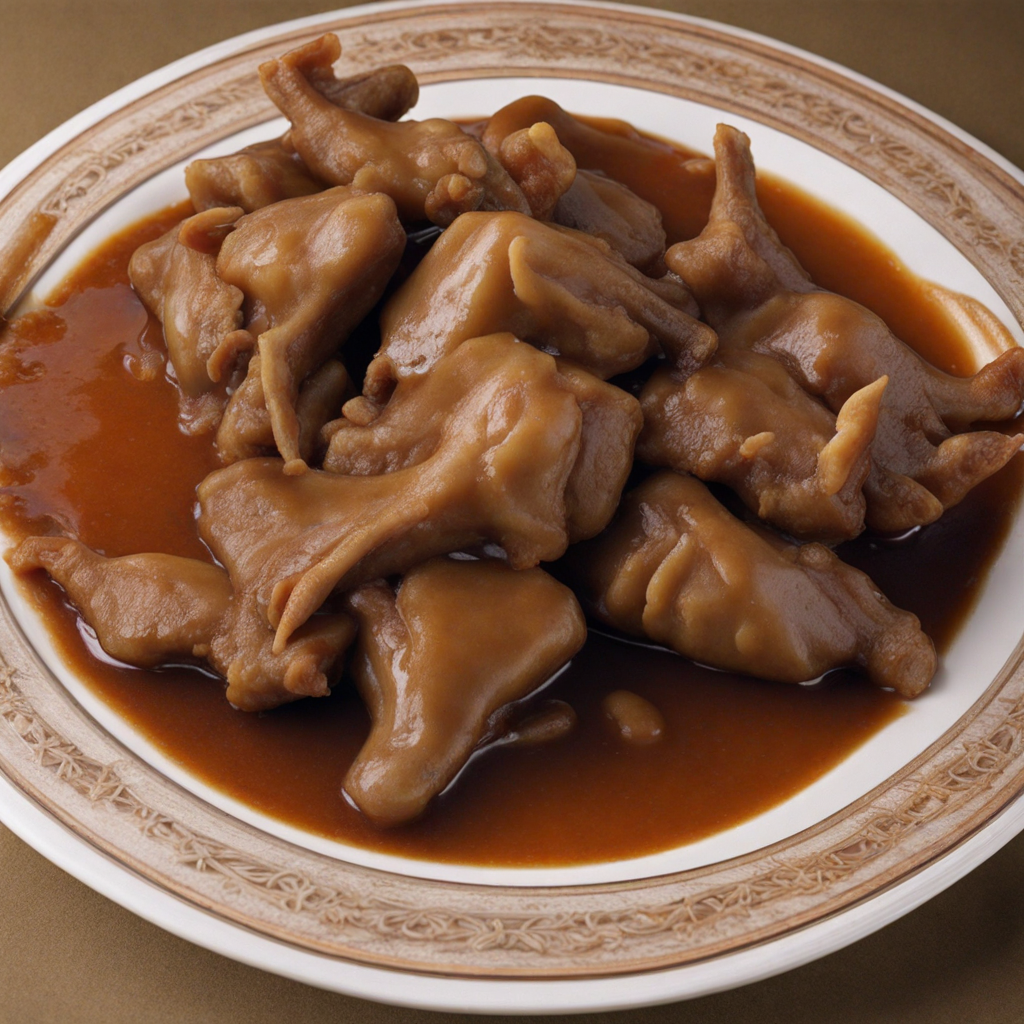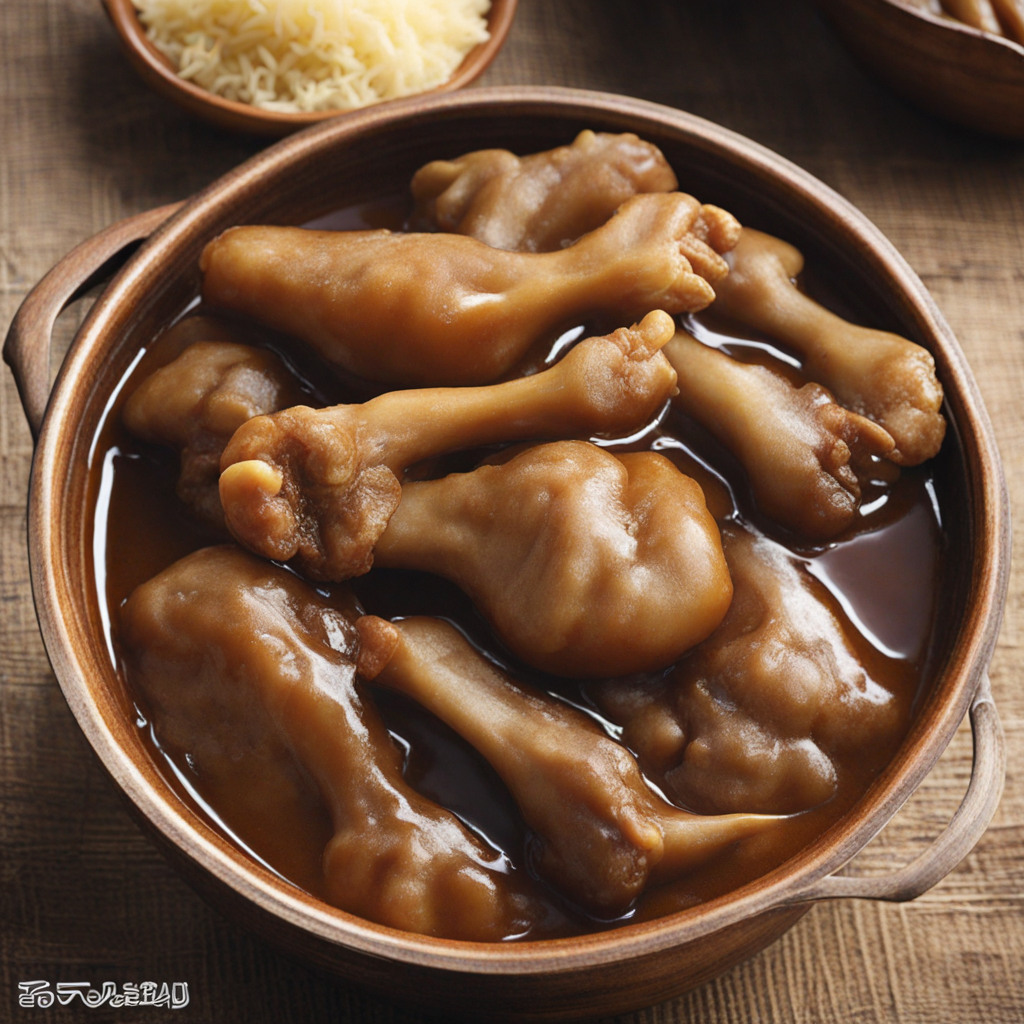Kawari
Kawari is a traditional Sudanese dish that reflects the rich culinary heritage of the region. This delightful meal primarily consists of tender lamb or goat meat, which is marinated in a blend of spices such as cumin, coriander, and garlic. The meat is then slow-cooked to perfection, allowing the flavors to meld beautifully and the meat to become incredibly succulent. The addition of fresh herbs like parsley and cilantro enhances its aroma, making it not only a feast for the palate but also for the senses. Accompanying the meat, Kawari is often served with a side of spiced rice or traditional flatbreads, which serve as perfect vessels for scooping up the flavorful meat. The dish is sometimes garnished with caramelized onions and served alongside a tangy salad made from fresh vegetables, adding a refreshing crunch that balances the richness of the meat. The combination of textures and flavors in Kawari makes it a unique experience, inviting diners to savor each bite slowly. What truly sets Kawari apart is its cultural significance; it is often enjoyed during special occasions and gatherings, symbolizing hospitality and community spirit. The communal aspect of sharing this dish is integral to its enjoyment, as families and friends come together to relish the meal. For anyone eager to explore new culinary horizons, Kawari offers a taste of Sudan's vibrant traditions and a chance to experience the warmth and flavor of its people.
How It Became This Dish
The Journey of كوارع (Kawari) in Sudan: A Culinary Tradition #### Origins of كوارع Kawari, the Sudanese term for cow or sheep trotters, refers to the culinary practice of preparing and consuming the lower legs of these animals. The dish has deep roots that trace back through the annals of Sudanese history, with its origins likely interwoven with the pastoralist traditions of the region. For centuries, the people of Sudan have relied on livestock not only for sustenance but also for cultural identity. The consumption of offal, including trotters, can be seen as a reflection of resourcefulness, utilizing every part of the animal in a time when food wastage was not an option. Historically, Sudan has been a crossroads of various cultures and civilizations, from ancient Nubia to the Islamic empires. The culinary practices developed in these regions were influenced by trade, migration, and the mingling of diverse peoples. The tradition of consuming trotters can be linked to the broader Middle Eastern and North African culinary practices, where offal is commonly featured in traditional dishes. However, the Sudanese have adapted these influences into their unique culinary identity, making kawari a dish that resonates deeply within their cultural framework. #### Cultural Significance Kawari is more than just a dish; it embodies social and familial bonds in Sudanese culture. The preparation and consumption of kawari often occur during communal gatherings, celebrations, and family events. It is common for families to come together in a spirit of camaraderie to prepare and enjoy this dish. The communal aspect of eating kawari fosters connections and strengthens relationships, showcasing how food serves as a medium for cultural expression and social cohesion. In Sudan, the preparation of kawari is a ritual that involves several steps, each imbued with meaning. The trotters are typically boiled for an extended period until the collagen breaks down, resulting in tender meat and a rich, gelatinous broth. This process requires patience and skill, and it often becomes a communal affair, with individuals taking turns to stir the pot, season the broth, and share stories. The dish is usually served with a spicy sauce made from a blend of Sudanese spices, often accompanied by flatbreads or rice, making it a hearty and satisfying meal. Kawari also holds a place in the Sudanese culinary landscape as a symbol of hospitality. Serving this dish to guests is an expression of generosity and warmth, reflecting the Sudanese ethos of welcoming others into their homes. Its significance is further underscored during religious and festive occasions, where it is often prepared as a special treat, illustrating how food can embody cultural values and communal bonds. #### Development Over Time As Sudan has undergone various socio-political changes throughout its history, so too has the dish of kawari evolved. The influences of colonialism, globalization, and urbanization have all played a role in shaping the way kawari is prepared and consumed today. During the British colonial period in the early 20th century, Sudan experienced an influx of new ingredients and culinary techniques, which began to blend with traditional practices. However, despite these changes, the essence of kawari remained intact, serving as a reminder of the country’s agricultural roots and pastoral heritage. In more recent years, the urbanization of Sudan has led to a transformation in food culture. Traditional dishes like kawari have found their way into modern restaurants and eateries, catering to a younger generation that often seeks convenience and novelty. Street vendors and food stalls in urban areas frequently serve kawari, making it accessible to a broader audience. This shift has resulted in variations of the dish, with some vendors adding unique twists that reflect contemporary tastes while still honoring the traditional preparation methods. The rise of social media and food blogging has also played a significant role in revitalizing interest in traditional dishes like kawari. As food enthusiasts document their culinary experiences online, the dish has gained visibility beyond Sudan’s borders, attracting attention from foodies around the world. This newfound interest has encouraged chefs and home cooks alike to experiment with kawari, blending traditional techniques with modern flavors and presentations. #### Modern Interpretations and Global Influence In today’s globalized world, the dish of kawari is not confined to Sudan alone. Diasporic communities have carried the tradition with them, introducing kawari to new locales and adapting it to fit diverse palates. In cities with significant Sudanese populations, one can find restaurants that specialize in traditional dishes, allowing locals and newcomers alike to experience the rich flavors of Sudanese cuisine. At the same time, the adaptability of kawari has led to innovative interpretations. Chefs are increasingly experimenting with fusion dishes, combining the essence of kawari with elements from other culinary traditions. For instance, one might find kawari tacos or kawari served in a gourmet style, showcasing the versatility of this traditional dish and its potential to reach a wider audience. #### Conclusion Kawari stands as a testament to the enduring nature of Sudanese culinary traditions. Its origins, steeped in history and culture, reflect the resourcefulness of a people who have learned to honor every part of the animal. As it has evolved, kawari has maintained its significance as a dish that brings people together, fostering community and celebrating hospitality. As Sudan continues to navigate the complexities of modernity, kawari remains a cherished dish that connects the past with the present, inviting new generations to partake in the rich tapestry of Sudanese culinary heritage. Whether enjoyed in a bustling market, a family gathering, or a gourmet restaurant, kawari is a flavorful reminder of the cultural significance of food and its power to unite individuals from diverse backgrounds in shared experiences.
You may like
Discover local flavors from Sudan







